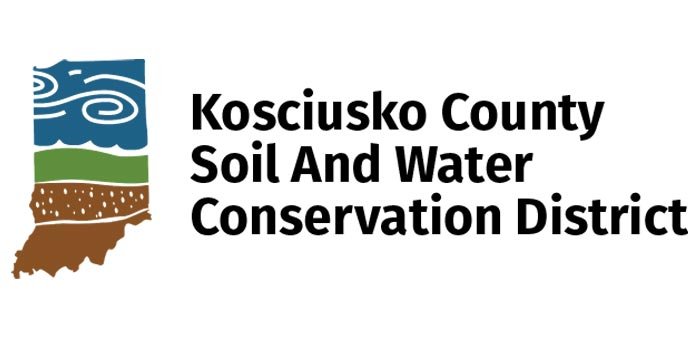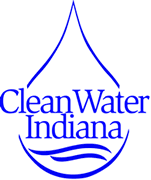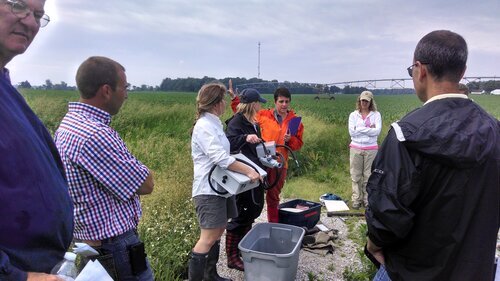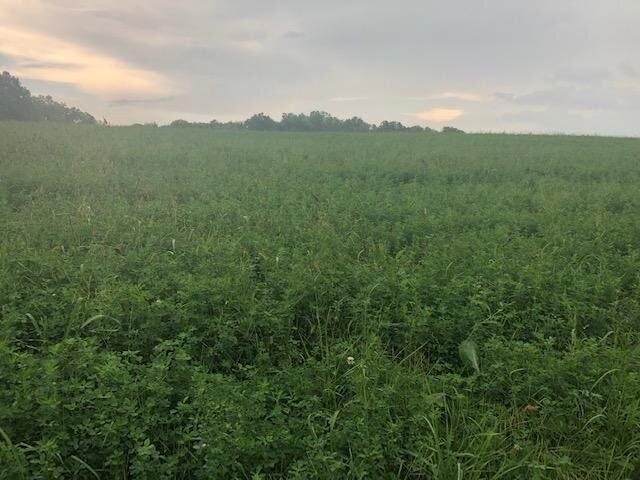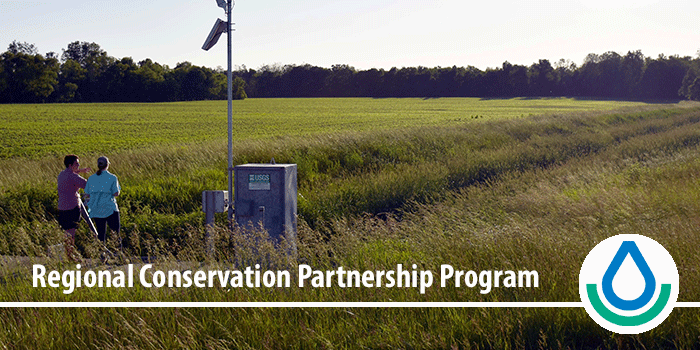CLEAN WATER INDIANa GRANTS—IMPROVING WATER QUALITY
Helping local landowners improve our county’s water quality is one of the main functions of the Kosciusko County Soil and Water Conservation District (SWCD). In 2020, Clean Water Indiana grants were one of the programs that the district tapped into to provide this assistance. SWCD administered one CWI grant in 2020 and will be a partner in a second project beginning in 2021.
The Clean Water Indiana fund is administered by the Indiana State Department of Agriculture - Division of Soil Conservation, under the direction of the State Soil Conservation Board. Soil and Water Conservation Districts can apply for these grants to fund projects aimed at increasing conservation land treatment practices that will improve water quality..
Eel River Watershed
Kosciusko County Soil and Water Conservation District (SWCD), in partnership with the SWCDs of Wabash, Whitley and Huntington counties, was the recipient of a $75,000 Clean Water Indiana (CWI) grant to address natural resource concerns in the following targeted Eel River sub-watersheds: Hurricane Creek, Pony Creek and Sugar Creek.
Wabash County SWCD will be the grant administrator for this project, which begins January 1, 2021 and will run for 3 years. The goals of the project are to promote the implementation of Best Management Practices that will reduce nutrient and sediment loads and improve stream ecological integrity. Cost share will be available for filter strips, grassed waterways and cover crops. Please see the application for cost-share rates of pay. Partnering SWCD’s will rank and review all applications. Site visits may be required as part of the review process.
Please see the watershed map of Hurricane Creek to see if you are eligible.
Applications are accepted year around. Practices must be completed by December 2023.
SHATTO WATERSHED PROJECT
In 2017, Kosciusko County SWCD received a multi-year $86,331.00 grant to assist with the completion of this long-standing project that looked at the water quality impacts of stacking a land practice (cover crops) with an instream structure (two-stage ditch). CWI funds were awarded to help with the cost of two-stage ditch construction and the planting of cover crops.
In 2019, CWI provided cost-share for the final 50 acres of cover crops to max out this grant. Over the course of the grant, assistance was provided for a total of 850 acres of cover crops and 8325 feet of two-stage ditch.
This CWI grant helped complete conservation practices that were a part of a Regional Conservation Partnership Program project in the Shatto watershed. This bigger project not only implemented conservation practices but contained extensive water testing to determine the effects of these practices on water quality.
TIPPECANOE RIVER WATERSHED PROJECT
In the Fall of 2018, it was announced that the Kosciusko County SWCD, in partnership with Whitley County SWCD and The Watershed Foundation (TWF), was awarded $75,000 over three years in CWI grant funds to begin January 2019. The first year of the grant was spent assessing the project area to identity and begin planning for potential projects. Three watershed conservationists were contracted by TWF to build relationships with landowners, provide technical support, and assist in finding financial support for conservation projects. Each SWCD participated in and oversaw this process through a Watershed Management Committee.
In 2020, the grant provided technical assistance to landowners to begin implementation of these identified projects. Landowners were directly contacted and provided both technical and financial support. Six projects have been completed and paid – 3 hayland plantings, 2 cover crops, and 1 drone for nitrogen testing. Twelve additional projects are underway or have been approved for implementation. Types of practices implemented and under consideration: cover crops, wetland restoration, lakeshore and streambank restoration with native plant buffers, hayland planting, grassed waterway, WASCOBs, blind inlets, livestock exclusion.
Work will continue with landowners and projects in 2021, the last year of this project.
LARE GRANTS ADDRESS WATER QUALITY CONCERNS
Zwick Project: LARE funded the conversion of this 5-acre row crop field to a hay land planting.
Kosciusko County SWCD administered two Lake and River Enhancement (LARE) land treatment grants in 2020 and will begin a new grant in 2021. LARE grants were awarded through the Indiana Department of Natural Resources – Division of Fish and Wildlife. These funds help implement conservation practices that enhance soil health and improve water quality.
In collaboration with The Watershed Foundation (TWF), SWCD received $15,000 (2018 award) to assist landowners in the Upper Tippecanoe River Watershed and $50,0ooo (2019 award) to assist landowners in the Walnut Creek Watershed. The partnership was also awarded a 2021 grant of $25,000, for continued work in the Walnut Creek Watershed.
Leiter Project: LARE funded this project which included 1,500 ft of new grassed waterway, 2,890 ft of underground tile to handle standing water, two new water and sediment control basins to help with gully erosion, and three grade stabilization structures to further aid infiltration and prevent erosion.
The goal of the Division of Fish and Wildlife's Lake and River Enhancement (LARE) Section is to protect and enhance aquatic habitat for fish and wildlife, to insure the continued viability of Indiana's publicly accessible lakes and streams for multiple uses, including recreational opportunities. This is accomplished through measures that reduce non-point sediment and nutrient pollution of surface waters to a level that meets or surpasses state water quality standards.
Projects funded to date included: WASCOBs (water and sediment control basins), blind inlets, grassed waterways, pollinator habitat restoration, hayland plantings, and cover crops.
EPA AWARDS MAJOR GRANT for walnut creek watershed
In the Fall of 2019, it was announced that The Watershed Foundation (TWF) had been awarded a $400,000 Environmental Protection Agency (EPA) grant through the Indiana Department of Environmental Management (IDEM) to improve water quality in Warsaw, Winona Lake and surrounding communities. The grant is the largest amount to be awarded to TWF and will fund watershed conservation work over three years beginning in 2021.The grant success follows the State and EPA’s approval in September of a comprehensive Watershed Management Plan (WMP) for this area.
Over the last four years TWF has led the Clean Waters Partnership, a group representing 16 local agencies and organizations, including the Kosciusko County Soil and Water Conservation District, in the development of the Watershed Management Plan. The WMP evaluated water quality, identified pollution sources, and prioritized solutions to protect and improve the communities’ water quality, and to ensure cleaner water was reaching the Tippecanoe River.
Although the $400,000 grant funding from the EPA/Indiana Department of Environmental Management doesn’t kick in for a little over a year, critical work is already underway in this area.
Research carried out during the development of the WMP identified the most problematic issues are sediments, nutrients from fertilizers, and bacteria entering the lakes. Impacts of this pollution include excessive weed and algae growth, the filling in on the lake bottom, and diminished fishing and recreation potential.
Examples of current BMPs being introduced include: wetland restoration, increased no-till farming, cover crops planting, hayland planting, water & sediment control basins, 2-stage ditches, and separating livestock from waterways with fencing.
SWCD congratulates TWF on this extraordinary grant award and looks forward to being a partner in its implementation.
“Kosciusko County SWCD is pleased to be a part of this partnership.” “Working together with this diverse local group towards common goals is a win-win for the community. SWCD will do its part to ensure this project’s success.”
RCPP PROGRAM Completed SHATTO STUDY PROJECT IN 2019
A partnership of the University of Notre Dame, The Nature Conservancy, and the Soil and Water Conservation Districts of Kosciusko and Jasper counties, with support from the Kosciusko County Surveyor’s office, worked on the Regional Conservation Partnership Program (RCPP) Shatto project throughout 2019 and 2020.
RCPP is a comprehensive and flexible program that uses partnerships to stretch and multiply conservation investments and reach conservation goals on a regional or watershed scale. Through RCPP, the Natural Resources Conservation Service and state, local and regional partners coordinate resources to help producers install and maintain conservation activities in selected project areas. Partners leverage RCPP funding in project areas and report on the benefits achieved.
In 2015, RCPP allocated multi-year project funds in three areas: National, State, and Critical Conservation Areas. Selections were based on meeting priority concerns, including soil quality, water quality and at-risk species.
In 2015, the Indiana project, Preventing Nutrient Loss from Indiana Farms: Watershed Scale Pairing of Cover Crops and the Two-Stage Ditch, was awarded $1.26 million for a five-year project to install two-stage ditches, combined with cover crop plantings, in two targeted watersheds, one in Kosciusko County (Shatto Watershed) and one in Jasper County (Kirkpatrick Watershed). The project also included a water monitoring component to measure impacts of the stacking of these two practices, through the University of Notre Dame.
Construction was completed in 2018 on Phase 2 (final) of the two-stage ditch extension, for a total length of 19,395 feet, making this the longest contiguous section of two-stage ditch in the world. In 2019, cover crop assistance was continued. Additionally, water monitoring for this project continued through 2019, building on a historic set of data that began in 2006. Supplemental funding for this project came from Indiana Department of Natural Resource’s Lake and River Enhancement program and Indiana State Department of Agriculture’s Clean Water Indiana Program, as well as, the Kosciusko County Surveyor’s office.
This project continued monitoring efforts throughout 2020, thus yielding valuable information on the efficacy of the combination of these practices.
North Webster Elementary School Windbreak
Recognizing the need for a windbreak, North Webster Elementary School contacted the SWCD office in 2019 looking for assistance. The conservation team got to work! A windbreak plan was designed for the school and the Soil and Water Conservation District (SWCD) secured and donated the trees. Some of the over 400 Norway Spruces came from Indiana’s State Tree Nursery, while other were provided through the SWCD tree sale program.
Windbreaks are vegetative barriers that are made up of trees, shrubs, and/or grasses planted to provide shelter from the wind and to protect against soil erosion. They are planted around the edges of fields or around structures. Properly designed windbreaks can reduce the cost of energy for home and support buildings while providing habitat for wildlife.
Windbreaks work by reducing wind velocity in the wind shadow area to: 1) control wind erosion, 2) deposit snow uniformly, 3) increase crop quality and production, and 4) improve water use efficiency.
“We were pleased to work with the school on this project,” stated Jamie Scott, SWCD Board Chairman. “This is a great example of working in our community to address a natural resource challenge. Providing conservation assistance of this type is an important part of what we, as a Soil and Water Conservation District can do.”
SWCD COLLABORATED WITH SCOUTS TO PLANT TREES AT KOINONIA NATURE PRESERVE
Kosciusko County SWCD had trees left from their annual tree sale program that needed a home. Koinonia Nature Preserve needed trees. A scout group needed a service project. This perfectly-timed opportunity for a collaborative project came about in the spring of 2019, with SWCD donating 500 trees to a scout group for planting at Koinonia Nature Preserve.
A long day of tree planting was conducted by Cub Scout Pack 3736 of Warsaw, led by Cubmaster Sheri Reeve. The Pack was made up of boys and girls, ages K-5.
“We are always looking for ways to serve the community and when this was presented to us, it was a win-win. It helped get trees planted and helped us get hours for community service,” stated Cathy Reed, a scouting parent who assisted the group with planting.
SWCD was pleased to be a part this project and looks forward to seeing the trees grow!
